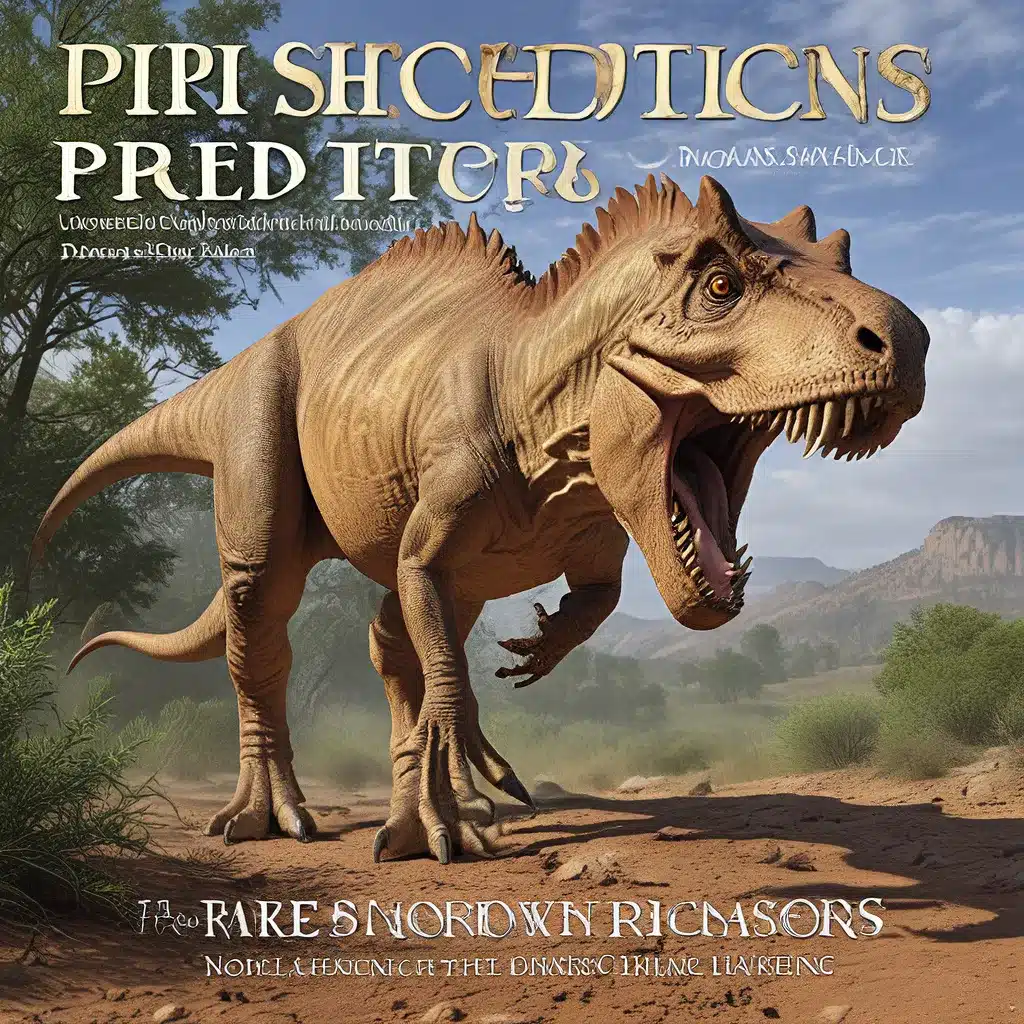
The world of dinosaurs has long captivated the human imagination, with their towering statures, fearsome jaws, and the sheer awe-inspiring nature of these ancient creatures. As paleontologists and archaeologists continue to unearth new discoveries, the mysteries surrounding these prehistoric predators have only deepened, sparking renewed interest and a deeper understanding of their complex lives and behaviors.
The Feathered Enigma
One of the most significant recent discoveries in the realm of dinosaur research is the evidence of feathered dinosaurs. Feathered dinosaurs have been a game-changer, shattering the long-held perception of these creatures as scaly, reptilian beasts. The Smithsonian Magazine article highlights the importance of these findings, noting that “Feathered dinosaurs do have feathers” and that the documentary series “Planet Dinosaur” has done an admirable job in depicting these feathered theropods.
As the article explains, the show’s second episode focuses on the small, feathered dinosaurs that once inhabited prehistoric China, providing viewers with a glimpse into the diverse and often surprising nature of these ancient creatures. The inclusion of fully feathered theropods in the documentary is a significant step forward in accurately representing the paleontological evidence and challenging the traditional depictions of dinosaurs.
However, the article also notes a few instances where the documentary series falls short in its scientific accuracy. The claims about the venomous Sinornithosaurus and the “dino gangs” trope are highlighted as examples where the show sacrifices scientific rigor for the sake of sensationalism. These critiques serve as a reminder that while modern media and documentaries have the power to captivate and educate the public, it is crucial to maintain a strong commitment to scientific integrity and ensure that any dramatic interpretations are firmly grounded in evidence.
Predator or Prey: Dinosaur Hunting Strategies
Beyond the feathered enigma, the article delves into the complex dynamics of dinosaur hunting and predation. The focus shifts to Episode 3 of “Planet Dinosaur,” which showcases the evolutionary arms race between tyrannosaurs and horned dinosaurs, as well as the evidence of cannibalism among certain predatory species.
The article points out that while the show presents the connection between the increasing size of these two lineages as evidence of an evolutionary arms race, the true reasons behind the evolution of horns and frills in ceratopsian dinosaurs may have been more complex. The article suggests that these ornamental features likely served a greater purpose in communication and competition within the same species, rather than solely as a defense mechanism against predators.
The article also takes issue with the depiction of “dino gangs” in the documentary, noting that the mere presence of multiple individuals of a particular species, such as Daspletosaurus, does not necessarily imply that they lived and hunted in groups. The author cautions against the temptation to sensationalize such findings, emphasizing the need for detailed analyses to determine the true nature of these bone accumulations.
However, the article does commend the show’s treatment of Majungasaurus, a predatory dinosaur known for its cannibalistic behavior. This particular case study, supported by the fossil evidence, serves as a reminder that not all dinosaur predation was focused on herbivorous species, and that some predators, like Tyrannosaurus, were opportunistic in their feeding habits.
Beyond the Carnivores: Exploring the Diversity of Dinosaur Life
While the article acknowledges the fascination with carnivorous dinosaurs and the tendency of documentaries to focus on their predatory exploits, it also highlights the need for a more balanced approach in representing the diverse spectrum of dinosaur life. The author suggests that the next installments of “Planet Dinosaur” could benefit from a deeper exploration of the non-carnivorous dinosaur species, such as sauropods, hadrosaurs, and horned dinosaurs, to shed light on the full range of behaviors and adaptations exhibited by these prehistoric creatures.
As the article notes, the 19th-century restorations of dinosaurs have been heavily focused on the predatory aspects, perpetuating the perception that herbivores were merely passive victims. However, the author argues that there is far more to dinosaur science than simply understanding the ferocity of the tyrannosaurs, and that a more comprehensive understanding of these ancient ecosystems requires a deeper exploration of the lives and behaviors of all dinosaur species, not just the carnivores.
This call for a more balanced and scientifically rigorous approach to dinosaur documentaries and representations is a crucial one, as it underscores the importance of accurate and nuanced storytelling when it comes to these captivating creatures. By expanding the narrative beyond the sensational and focusing on the diverse array of dinosaur species and their intricate relationships, the field of paleontology can continue to captivate and educate audiences, shedding new light on the mysteries of the prehistoric world.
Conclusion: Embracing the Evolving Landscape of Dinosaur Discovery
As the article highlights, the world of dinosaur research is an ever-evolving landscape, with new discoveries and insights constantly challenging our understanding of these ancient creatures. From the groundbreaking findings of feathered dinosaurs to the complex dynamics of predator-prey relationships, the mysteries surrounding the dinosaurs continue to unfold, fueling our collective fascination and driving the need for more rigorous and balanced representations in media and popular culture.
The Lost Kingdoms website is dedicated to exploring the rich tapestry of ancient civilizations and their enduring legacies, and the study of dinosaurs and their prehistoric habitats is an integral part of this journey. By delving deeper into the archaeological and paleontological evidence, we can uncover the intricate connections between the ancient world and the modern understanding of our planet’s history, ultimately enhancing our appreciation for the complex and captivating story of life on Earth.
As we continue to unravel the mysteries of dinosaur hunting and the diverse ecosystems they inhabited, we must remain committed to scientific rigor, open-mindedness, and a willingness to challenge our preconceptions. Only through this approach can we truly do justice to the grandeur and complexity of the prehistoric world, and inspire future generations to embark on their own journeys of discovery.


